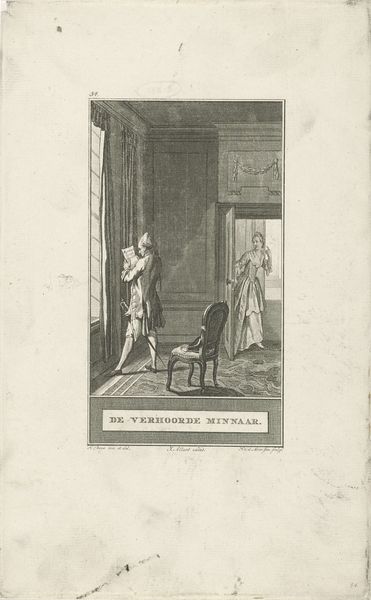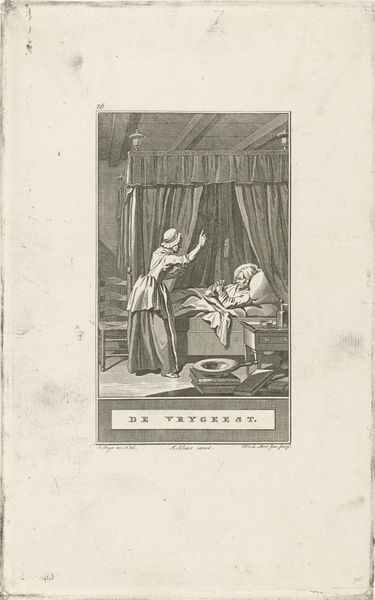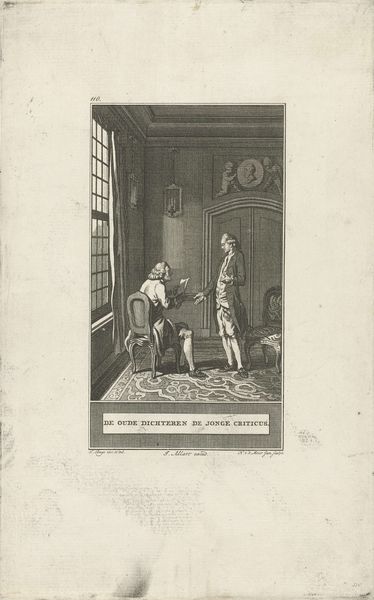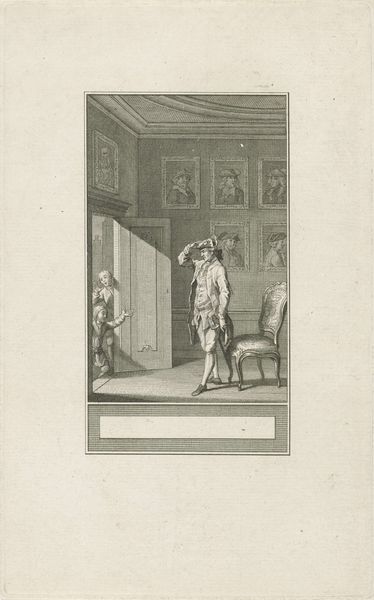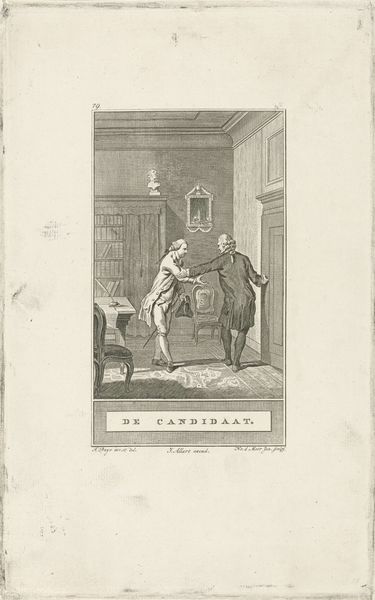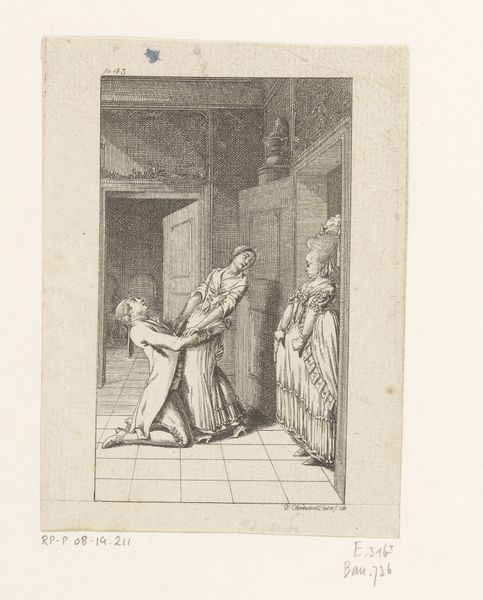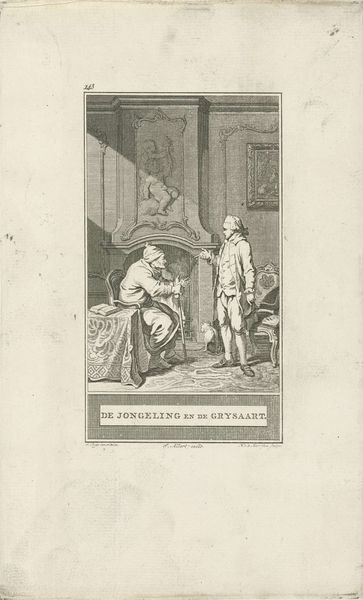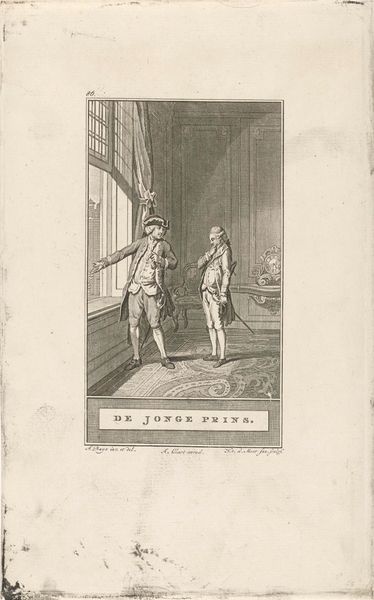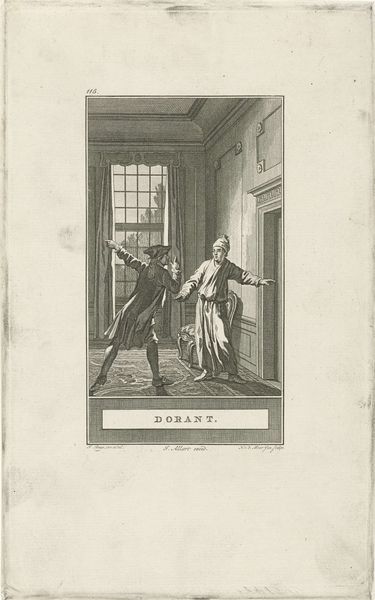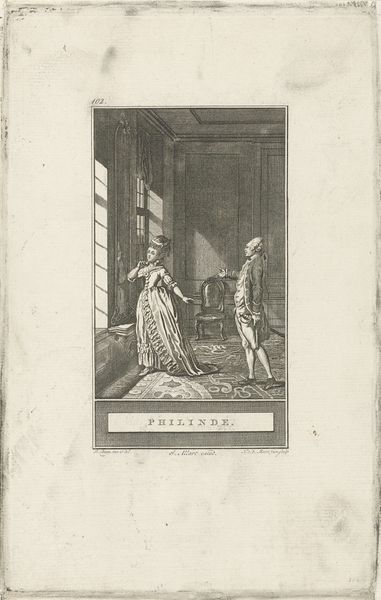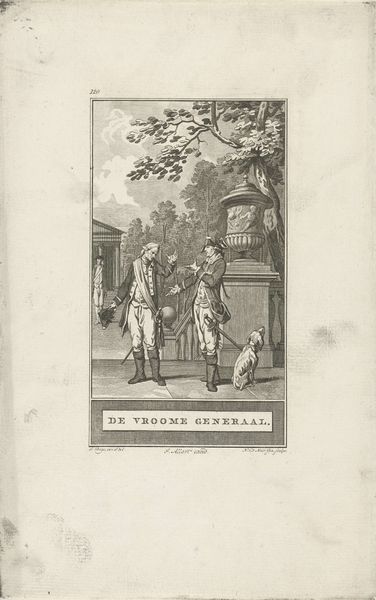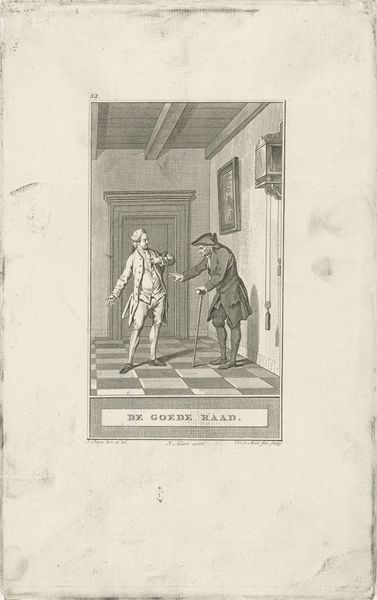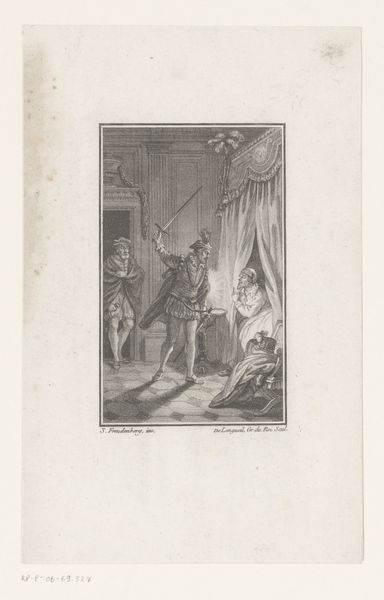
drawing, print, intaglio, engraving
#
portrait
#
drawing
#
neoclacissism
# print
#
intaglio
#
genre-painting
#
history-painting
#
engraving
Dimensions: height 249 mm, width 159 mm
Copyright: Rijks Museum: Open Domain
Curator: Looking at this print, titled “Begroeting,” or “Greeting,” from sometime between 1778 and 1785, by Noach van der (II) Meer, I immediately notice the detail in the interior setting. Editor: It’s striking. A little cold, perhaps? But exquisitely rendered, the textures achieved through engraving are captivating, almost hyperreal for the period. I want to touch the paper and feel the intaglio. Curator: Absolutely. And if we consider its production, it is clear that prints such as these served as a crucial method for disseminating neoclassical imagery. It enabled broader social classes to consume artwork previously reserved for a wealthy patronage system. The labor that went into each impression is an integral aspect of its social history. Editor: Precisely. This image speaks volumes about the social codes of the era. Two men of stature, in a seemingly formal greeting ritualized indoors— note how it's captioned “De Vriendschaps Dienst” or “The Service of Friendship." It highlights the importance of male sociability and possibly even patronage within the Dutch Republic. Curator: The staging is intentional too, focusing on that point of interaction between them: hand clasping. But what about the reception? Does that reinforce particular notions about proper behavior, contributing to a larger social project through image and distribution? Editor: That’s right. The print acted as a tool for instructing conduct. Imagine multiple prints, influencing tastes and manners, circulating and creating that culture. But think of all the other artisans and materials involved in producing and spreading this seemingly simple artwork— paper makers, distributors, etc. It presents art's entanglement within wider systems of production and its cultural importance for transmitting ideas of civility. Curator: Agreed. "Begroeting" offers a rich visual window into both individual behaviors and broader historical forces at work. Editor: Indeed, by focusing on materiality and social context, the layered social impact becomes much more vibrant and tangible.
Comments
No comments
Be the first to comment and join the conversation on the ultimate creative platform.
